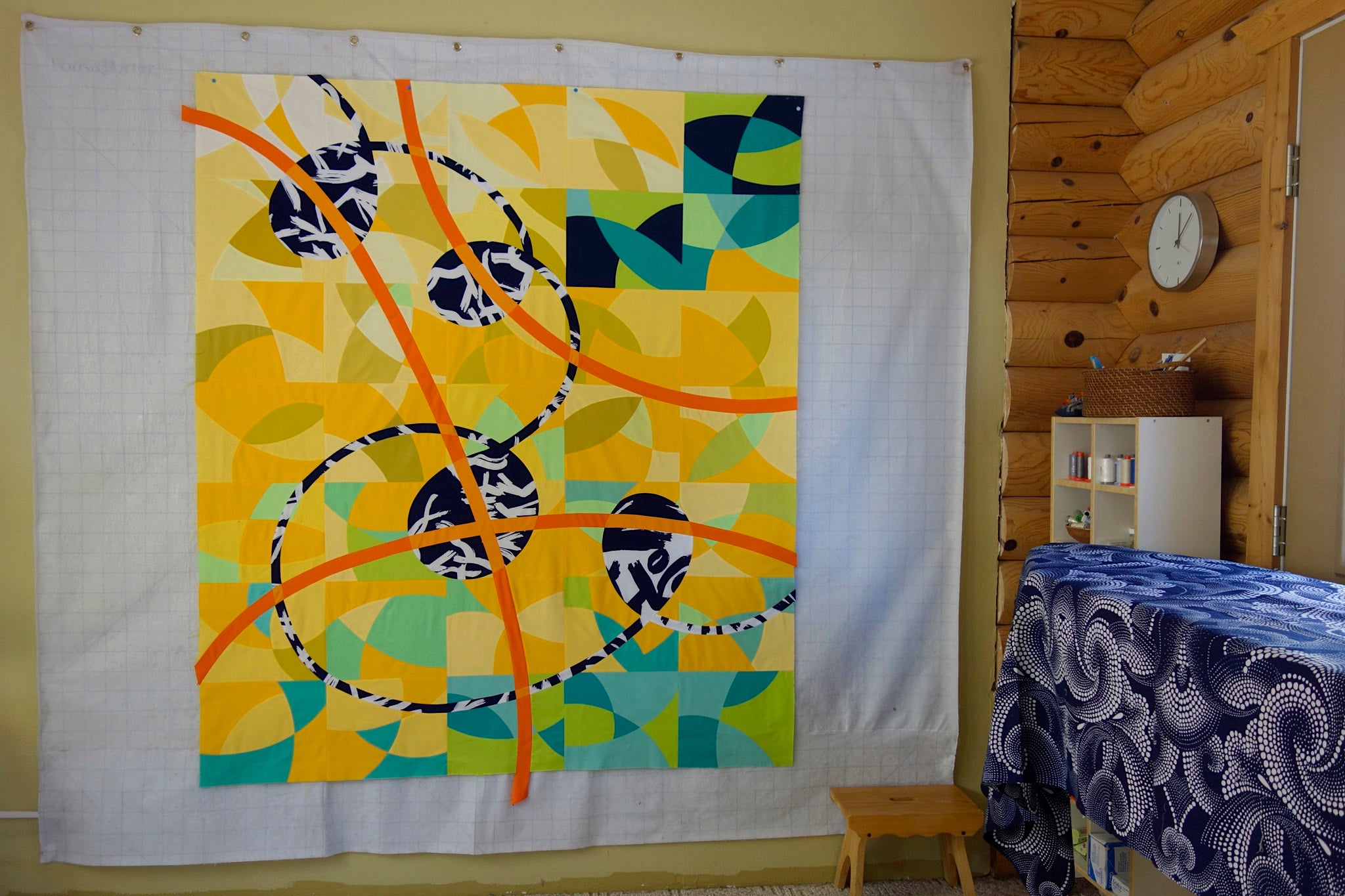By Patricia Belyea
WAUCONDA WA Often it’s the little things that can be make a big difference to our happiness and success. In surveying my sewing studio, I gathered up a bevy of useful and beloved gear to share with you.
Here’s my Bernina 1230. Or is it a Bernina? Yes, this 30-year old beauty was made in Switzerland and then sold in Japan under the Riccar brand. She is my workhorse.

I zigzag stitched together two Fons & Porter portable design walls to make my mega design wall.

My Brabantia ironing board works well for me. It’s super stable, easy to change heights, 18" wide, and has a great extension arm for resting my Rowenta Pro iron.

My adjustable-height Husky worktables are from Home Depot. I really like the wooden surfaces. My longer table has two shallow drawers—perfect for pencils, scissors, tape measures, and the like.

As much as I’m crazy about everything Japanese, I turn to Italy for thread. I'm an Aurifil Thread Girl.

My KAI pro shears are the best. The 8" scissors are an essential and the 4-1/4" ones are super handy.

Here’s a new discovery for me—a rotary cutter with a pinking blade. Made by KAI, I use it for cutting up kimono wool.

For pins, my go-to is Clover Extra-Fine Patchwork Pins. Although I’ve been told not to sew over pins, I go slowly and stitch right over these super-skinny pins.

Clover, out of Osaka, also makes a terrific seam ripper. The Japanese pick apart silk kimono to launder the luxurious fabrics so they have perfected the seam ripper—from the comfortable handle to the razor-sharp tip.

Believe it or not, even a pencil can contribute to my pleasure in the sewing studio. Blackwing pencils from Japan are known for their smooth stroke. They make me feel like an accomplished artist as I sketch my curve ideas.

I use a suction grab bar with my long gridded ruler. When cutting, I can put my body weight on the ruler so it doesn’t spin. And my fingers stay away from the dangerous rotary blade.

My June Tailor clapper is used for training my fabrics at the ironing board. To finish my designer facings, I first steam the edge and then I press down with the hunk of unfinished wood to flatten all the fabrics together.

I used to spend lots of time creating special hanging sleeves for my quilts. Now I use pre-made sleeves that come in unbleached or black cotton. My time is worth a lot more than the cost of this convenient product!

Here’s my last item: thanks to Kelly Spell’s recommendation, I own this giant lint roller. It cleans up messes in half the time. And the adhesive on the roller is gentle enough to pick up threads on my design wall without removing the flocking.

I am not a salesperson for the above products. Although many are from Japan, you can find them all online. Stay creative!




